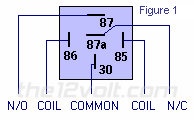Hey guys, need some help understanding the headlight requirements in Ontario.
Read that anything from 1970 on needs a running headlamp anytime motor is running. My bike is a 1977 and i am almost finished re-wiring it, there is no running headlamp. Light switch turns it off, engine running or not. There is no wiring for it. in 1979 there is a wire for that purpose.
Will i be able to pass safety, do i need to MacGruber a running headlamp? thanks in advance.
Read that anything from 1970 on needs a running headlamp anytime motor is running. My bike is a 1977 and i am almost finished re-wiring it, there is no running headlamp. Light switch turns it off, engine running or not. There is no wiring for it. in 1979 there is a wire for that purpose.
Will i be able to pass safety, do i need to MacGruber a running headlamp? thanks in advance.


